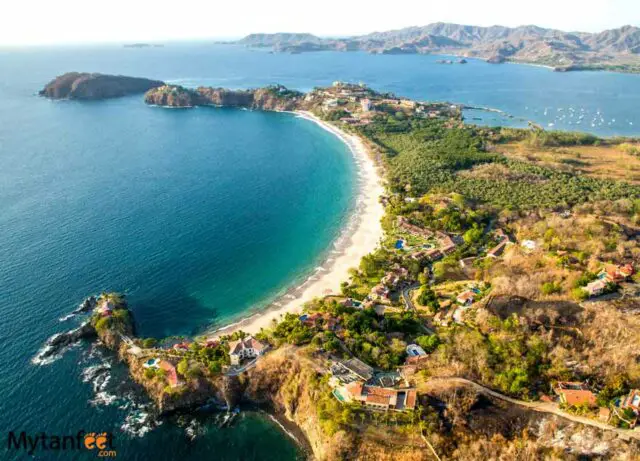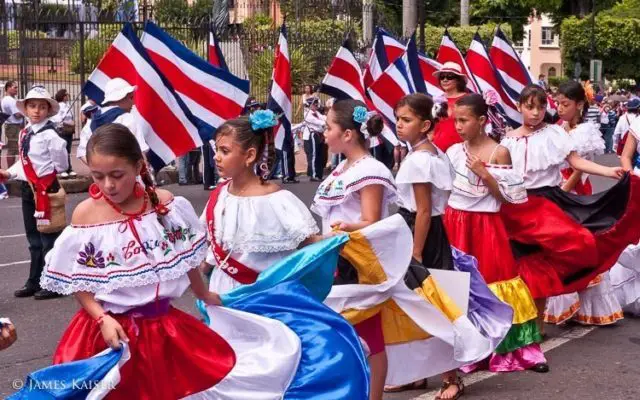The province of Guanacaste is one of the regions of Costa Rica where traditions, history, culture, rurality, gastronomy and crafts are mixed. In addition, it has a variety of places with exuberant nature, adventure activities and everything … with the essence of Costa Rica.
That is why the Costa Rican Tourism Institute (ICT) and the Ministry of Culture and Youth (MCJ) presented this Friday in Panama Beach, the Tourist-Cultural Guides of North Guanacaste (Guanacaste height) and South Guanacaste (Guanacaste lowland).
The activity was attended by the First Lady of the Republic and coordinator of the Chorotega Region, Claudia Dobles, and the Rector Minister of Tourism, Gustavo J. Segura, along with representatives of local governments and tourism entrepreneurs in the area.
The design of these guides has been a joint effort between the ICT, MCJ, the Ministry of Environment and Energy (MINAE), the municipalities, tourism chambers and tourism entrepreneurs to generate this material that invites national and foreign travelers to enjoy Guanacaste and its riches.
Valuable information
Minister Segura highlighted that these Guanacaste tourist guides are an important effort for the traveler to find valuable information about the architectural historical heritage, gastronomy, community cultural tourism, handicrafts, the cultural agenda, among many options that this province offers.
“Guanacaste is an area with great natural and cultural wealth. In it, its paradisiacal beaches, beautiful landscapes, and the magical nature of its protected areas stand out, which can be complemented with the observation of flora and fauna such as the arrival of sea turtles and bird watching”, described the tourism chief.

Great institutional work
For her part, the First Lady of the Republic, Claudia Dobles, assured that the launch of these guides is the result of a great institutional work that will allow to detail in a single place the great wealth that this beautiful province has to offer to the world and to the Costa Rican tourist.
“The guides are an invitation to be conquered by the cultural, natural, tourist, gastronomic and biodiversity wealth that Guanacaste offers. It is also a clear sign that we continue to bet on the economic growth and development of the Chorotega Region,” added Dobles.
The guides contain recommendations for tourists in sections such as “10 things that every tourist must do and see”, “What you must try in …”, dedicated to the gastronomy of each region. Also, a tourist and cultural map of each area; information on hotels, restaurants and travel agencies; tourist guides certified by the ICT; historical legacy; access routes and a section with details of crafts.
It also includes the history of each place, cultural activities, protected areas, rural community tourism, diving, snorkeling, service directory, information on roads and airports, humpback whale infograms, bird tourism and bull stop, among others.
Cultural approach and experience
Sylvie Durán, Minister of Culture and Youth, commented that “these two new tourist-cultural guides open up the possibility for national and foreign tourists to visit the corners of Guanacaste from a cultural approach and experience: experiencing their flavors, identifying their sounds and rites , enjoy the aromas and particular landscapes and, above all, its people and their warmth ”.
“The joint work between the ICT and the MCJ contributes to the reactivation of our tourist and cultural sectors, based on their linking and diversification. With this, the revitalization of the economy of the region, an area rich in cultural, artistic, heritage and natural resources”, she said.
Guanacaste cradle of customs, traditions and biodiversity
Guanacaste is the most northwestern province of the Costa Rican territory. It is the second largest region of Costa Rica with 10,140 km² of surface and 326,953 inhabitants. Geographically, Guanacaste can be divided into two parts. The cantons of the north (La Altura) and those of the south (La Bajura). For this reason, two Guanacaste tourist-cultural guides were developed.
Altitude. It is associated with the cantons located in the Cordillera de Guanacaste and the Sierra Minera de Tilarán: La Cruz, Liberia, Bagaces, Cañas, Tilarán and Abangares. The Bajura. It is linked to the cantons located in the Nicoya Peninsula: Carrillo, Santa Cruz, Nicoya, Hojancha and Nandayure. The cantons of Abangares and Tilarán are included in the Monteverde Cultural Tourist Guide.

Music
Guanacaste is recognized for its music, since the marimba, the guitar, the quijongo and the typical dances are part of the local traditions. Customs such as prayers, the “Guanacaste cry”, festivals, processions, typical and popular dances, pumps and strings; traditional crafts, with more than 5000 years of tradition in pottery, as well as contemporary crafts and masquerades; and gastronomy, whose central ingredient is corn, which is used in recipes for tortillas, donuts, tanelas, chicheme, among others.
This province preserves many expressions or particular cultural practices of the lowland of Guanacaste. Among these, the symbolic character of the Sabanero, known for traditions such as the riding of the bull, activities around the Black Christ of Esquipulas in Santa Cruz and the celebration of the Virgin of Guadalupe accompanied by the well-known dance of La Yegüita, in Nicoya, a mixture of indigenous and catholic tradition.
Because it is a very large region, it was necessary to develop mini-guides to describe the activities or tours that corresponded to each canton by development center that match the cantons. In the following links you can find the Guanacaste Tourist-Cultural Guides:
www.ict.go.cr/es/servicios-institucionales/guias-turistico-culturales.html
www.vamosaturistear.com/GuiasTuristicasCulturales/

